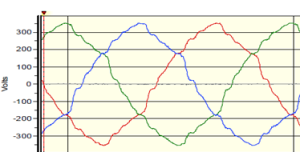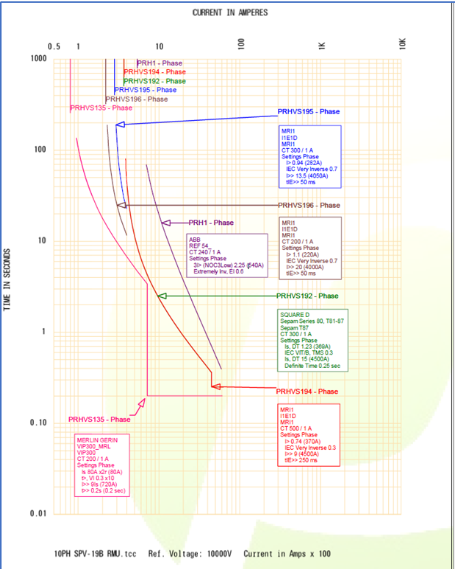The strive for power quality
Many large energy users in Ireland and abroad have set strict targets to reduce their energy emissions and costs. They are embarking on extensive energy management programmes to reduce energy bills.
Specifications such as ISO 50001 provide guidance on how energy users can follow a structured framework to reduce their energy use. In order for energy managers to earn the very prestigious title ‘ISO 50001 compliant’, much effort and investment goes into getting the plant to this standard. Often, a large investment in electrical infrastructure needs to be undertaken.
Energy saving technologies such as power factor correction (PFC), variable speed drives (VSD), energy efficient lighting, other non-linear loads, wind turbines and solar panels are being installed across industry to help reduce electricity bills. These components can have a detrimental effect on the power quality of a system that may not be immediately apparent.
What do we mean by power quality?
Power quality can be defined as any power problem manifested in voltage, current, or frequency deviations that result in failure or mis-operation of equipment (Roger C.Dugan, 2012). Power quality, loosely defined, is the study of powering and grounding electronic systems so as to maintain the integrity of the power supplied to the system (Alexander Kusko, 2007). In various sources it is used synonymously with supply reliability’, ‘service quality’, ‘voltage quality’, ‘current quality’, ‘quality of supply’ and ‘quality of consumption’.
Some of the main facets of poor power quality include harmonic distortion, short/long power interruptions, transients, surges, flicker, unbalance, under/over voltages and EMC issues. Presented below is an example of a clean 50 Hz sine wave with no power quality problems and a sine wave from a power supply suffering from harmonic distortion.
Figure 1 Clean 50 Hz Power Supply
Figure 2 50 Hz Power Supply with Harmonic Distortion
Some of the common causes of power quality problems in industry are listed as follows:
- Variable Speed Drives
- SCR’s and Diode Bridges
- Non-Detuned Capacitor Banks
- Electrical Coils and Chokes
- Large Motor Start up
- Transformer Inrush
- Electronic Equipment
- Lighting Ballasts
- Uninterruptible Power Supplies (UPS)
- Welding components
- Large Furnaces
- Incorrect Earthing System Design
Some of the consequences associated with power quality issues include:
- Loss of process synchronisation
- Nuisance tripping of protection devices
- Cables overheating
- Capacitor failure
- Electronic equipment failure
- Computer lock up
- Transformer overheating
- UPS failure
Research into power quality
There is a large amount of literature available regarding power quality and the detrimental effects that it can have on industry. This information however usually relates to jurisdictions outside of Ireland or the UK. There is very little correlation ever made between energy management programmes and rising power quality issues over the last decade or so.
Another item that can be difficult to quantify is the cost of poor power quality to industry.
One helpful online resource is Leonardo Energy. This is a global community aimed at sustainable energy professionals. It is an initiative funded by the European Copper Institute and offers white papers, policy and academic research on sustainable energy. This resource also provides useful information on the importance of good power quality.
A paper commissioned by Leonardo Energy in 2008 ‘Pan – European Power Quality Survey’ contains estimations that EU Industry annual losses reach €150bn due to power quality issues. The paper includes results from 62 participants in eight different countries.
Another report compiled in 2001 ‘The Cost of Power Disturbances to Industrial and Digital Economy Companies’ estimated that $45.7 billion was being lost annually in these sectors in the USA (David Lineweber, 2001). Lineweber looks in detail at the different types of power disturbances, the approach to assessing costs, the cost of individual and aggregate power outages and the cost of power quality phenomena. The paper although relatively dated gives a very good breakdown as to how the implications of power quality and reliability can be assessed for a certain area of US industry.
Case study
At Premium Power we deal with power quality issues every day. Often, power quality problems arrive with the installation of an energy saving programme. One such example occurred in Ireland where a large pharmaceutical plant installed a number of variable speed drives in a certain area of the plant. This resulted in substantial increase of harmonic distortion on the power supply to the high value vial filling process. Multiple zero crossings of the sine wave resulted in failures of power supplies of the control equipment, which caused production stoppages and over €2 million loss of product. Harmonic filtering has since been installed to prevent any repeat occurrences.
Some of the many mitigation techniques that can be utilised to correct power quality issues are:
- Passive harmonic filtering
- Active harmonic filtering
- Isolation transformers
- Static & Rotary UPS
- Sag Ride-Through Devices
- Oversizing equipment
- Detuned power factor correction
- Pre Insertion Resistors
- Cable shielding and grounding
- Surge protection and Active Tracking Filters
- Back up Generation
The phrase “if you can’t measure it you can’t manage it” is often used when describing the importance of utilising an energy monitoring system. This is also the case for power quality.
It is clear that power quality is an extremely technical area and requires a specialised skill set to decipher and analyse. Mission critical industry in Ireland is a very important part of the national economy. During the economic downturn between 2008 and 2013 the pharmaceutical, medical device and data centre sectors remained relatively strong. The pharmaceutical sector alone directly employs 25,000 people and is the largest payer of corporation tax in the country.
What’s in store for the future?
These large multinational corporations consume huge amounts of energy to run their complex manufacturing plants. While large scale energy savings schemes are required for these companies to meet their corporate and legal requirements, the presence of a reliable clean power supply is of significant importance. If Ireland is seen to lead the way in terms of taking a holistic approach to energy management and power reliability it may help secure future investment from these large blue chip multinational companies. It may also help to extend the lifetime of existing installations.
Premium Power, Our commitment
At Premium Power, we are committed to bringing power quality issues and the problems associated with to the forefront. We believe that energy should be treated as a critical asset by the industry and as such any effort to optimise consumption and increase efficiency of the plant should be encouraged. This has the added benefit of reducing the end-products carbon footprint.
For more information or to discuss some of our services please contact us below.















